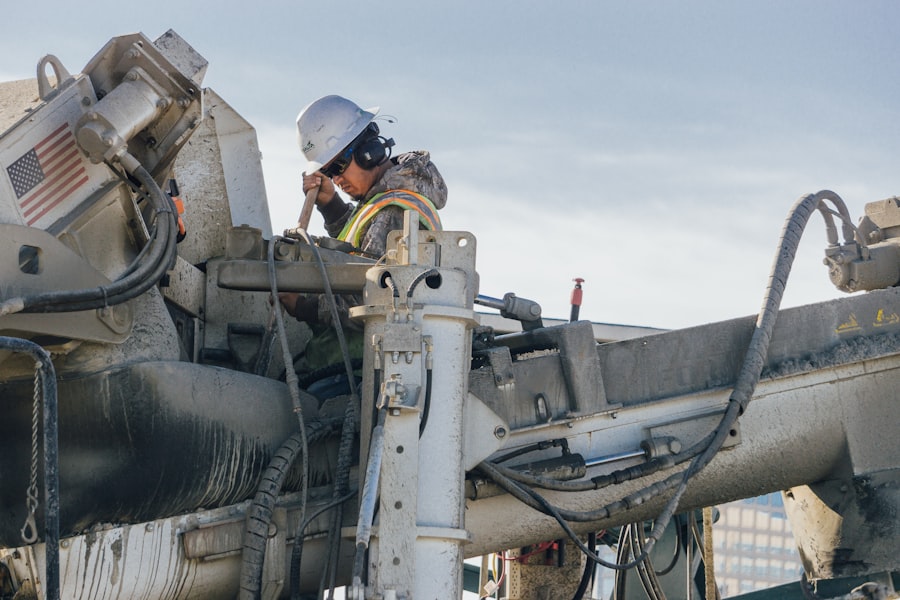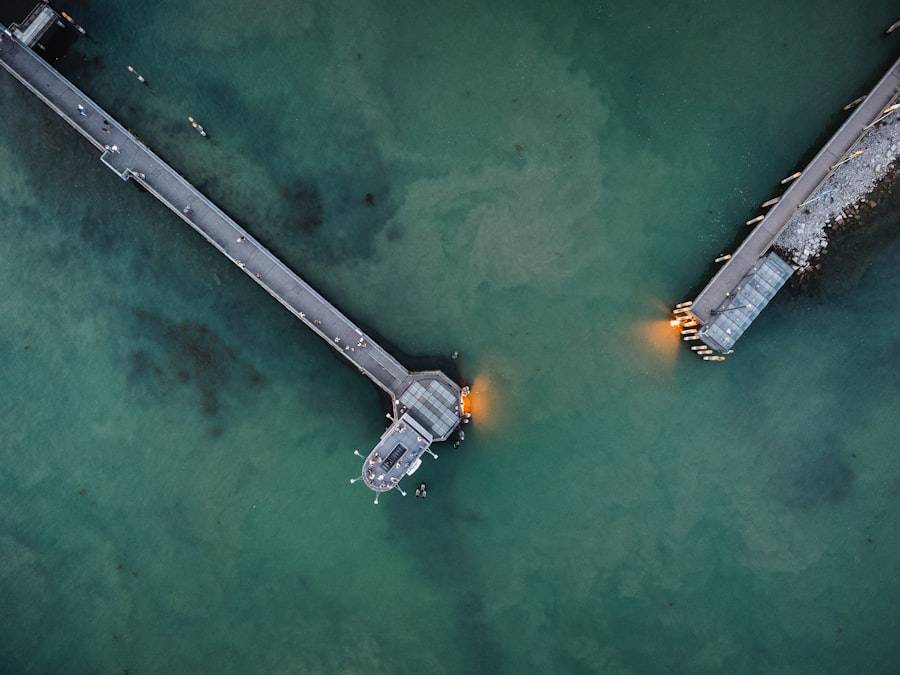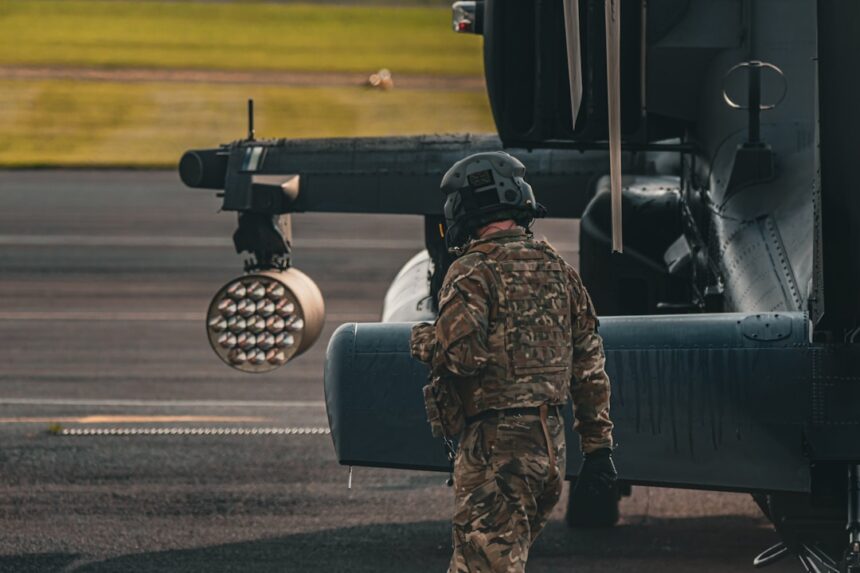Critical infrastructure refers to the essential systems and assets that are vital for the functioning of a society and its economy. These infrastructures encompass a wide range of sectors, including energy, transportation, water supply, healthcare, and communication systems. The interdependence of these sectors means that the failure or disruption of one can have cascading effects on others, potentially leading to significant societal and economic consequences.
As such, the protection and resilience of critical infrastructure have become paramount in contemporary discussions about national security and public safety. In recent years, the increasing complexity of global threats has underscored the need for robust strategies to safeguard these vital systems. From natural disasters to cyberattacks, the vulnerabilities of critical infrastructure are numerous and varied.
As societies become more reliant on technology and interconnected systems, the potential for disruption grows, making it imperative for governments, military organizations, and private sectors to collaborate in securing these essential assets.
Key Takeaways
- Critical infrastructure refers to the essential systems and assets that are vital for the functioning of a society and economy.
- Securing critical infrastructure is crucial for national security, public safety, and economic stability.
- The military plays a key role in securing critical infrastructure through protection, response, and recovery efforts.
- Examples of critical infrastructure include energy facilities, transportation systems, communication networks, and water supplies.
- Threats to critical infrastructure can come from natural disasters, cyber attacks, terrorism, and physical sabotage.
Importance of Securing Critical Infrastructure
The importance of securing critical infrastructure cannot be overstated. These systems are the backbone of modern civilization, supporting everything from daily activities to national defense. A disruption in critical infrastructure can lead to widespread chaos, affecting public health, safety, and economic stability.
For instance, a failure in the power grid can result in blackouts that paralyze cities, disrupt emergency services, and compromise food supply chains. Therefore, ensuring the integrity and resilience of these infrastructures is not just a matter of convenience; it is a fundamental requirement for maintaining societal order. Moreover, the economic implications of compromised critical infrastructure are profound.
Businesses rely on stable utilities and transportation networks to operate efficiently. When these systems are threatened or fail, the ripple effects can lead to significant financial losses, job layoffs, and long-term economic downturns.
Military’s Role in Securing Critical Infrastructure

The military plays a crucial role in securing critical infrastructure through its unique capabilities and resources. With extensive training in crisis management and disaster response, military personnel are often called upon to assist in safeguarding these vital systems during emergencies. Their expertise in logistics, engineering, and communication can be invaluable in both preventing disruptions and responding effectively when incidents occur.
In addition to direct intervention during crises, the military also engages in proactive measures to enhance the security of critical infrastructure. This includes conducting risk assessments, developing contingency plans, and collaborating with civilian agencies to identify vulnerabilities. By leveraging their advanced technology and strategic planning capabilities, military organizations can help fortify critical infrastructure against a wide range of threats, ensuring that these essential services remain operational even in times of crisis.
Examples of Critical Infrastructure
| Sector | Examples |
|---|---|
| Energy | Power plants, electrical grids |
| Transportation | Airports, highways, railways |
| Water | Water treatment plants, dams |
| Communication | Telecommunication networks, internet infrastructure |
| Financial Services | Banks, stock exchanges |
Critical infrastructure encompasses a diverse array of sectors that are essential for societal functioning. The energy sector is perhaps one of the most vital, as it powers homes, businesses, and essential services such as hospitals and emergency response systems. Transportation infrastructure, including roads, railways, airports, and ports, facilitates the movement of goods and people, making it integral to economic activity.
Water supply systems are another key component of critical infrastructure. Access to clean water is fundamental for public health and sanitation. Additionally, communication networks—ranging from telecommunications to internet services—are essential for information exchange and coordination during emergencies.
Each of these sectors is interconnected; a disruption in one can lead to failures in others, highlighting the need for comprehensive security measures across all critical infrastructure domains.
Threats to Critical Infrastructure
The threats facing critical infrastructure are diverse and evolving. Natural disasters such as hurricanes, earthquakes, and floods pose significant risks that can lead to widespread damage and disruption. Climate change has exacerbated these threats by increasing the frequency and intensity of such events.
Additionally, human-made threats such as terrorism and sabotage remain persistent concerns that can target critical infrastructure to achieve political or ideological goals. Cybersecurity threats have emerged as one of the most pressing challenges in recent years. As critical infrastructure becomes increasingly digitized and interconnected, vulnerabilities in software and networks can be exploited by malicious actors.
Cyberattacks can disrupt operations, compromise sensitive data, and even cause physical damage to infrastructure systems. The growing sophistication of cyber threats necessitates a proactive approach to securing critical infrastructure against both physical and digital vulnerabilities.
Strategies for Securing Critical Infrastructure

To effectively secure critical infrastructure, a multi-faceted approach is required that encompasses prevention, preparedness, response, and recovery strategies. Risk assessment is a foundational element of this approach; identifying vulnerabilities within each sector allows for targeted interventions that can mitigate potential threats. This involves not only evaluating physical assets but also assessing cybersecurity measures to ensure comprehensive protection.
Collaboration among various stakeholders is also essential for effective security strategies. Public-private partnerships can enhance resource sharing and information exchange between government agencies and private sector operators of critical infrastructure. Additionally, developing robust contingency plans that outline clear roles and responsibilities during emergencies can streamline response efforts and minimize disruptions when incidents occur.
Collaboration Between Military and Civilian Agencies
Collaboration between military and civilian agencies is vital for enhancing the security of critical infrastructure. The military brings specialized skills and resources that can complement civilian efforts in safeguarding these essential systems. Joint exercises and training programs can foster better communication and coordination between military personnel and civilian responders, ensuring a unified approach during crises.
Furthermore, information sharing is crucial for identifying emerging threats and vulnerabilities. By establishing channels for collaboration, both military and civilian agencies can stay informed about potential risks and develop strategies to address them proactively. This collaborative framework not only strengthens the security posture of critical infrastructure but also builds resilience within communities by fostering trust and cooperation among various stakeholders.
Technology and Innovation in Securing Critical Infrastructure
Advancements in technology play a pivotal role in enhancing the security of critical infrastructure. Innovations such as artificial intelligence (AI), machine learning, and big data analytics enable organizations to analyze vast amounts of information quickly, identifying patterns that may indicate potential threats. These technologies can enhance situational awareness and facilitate rapid decision-making during emergencies.
Moreover, emerging technologies such as drones and robotics are being utilized for surveillance and inspection purposes within critical infrastructure sectors. These tools can provide real-time data on the condition of physical assets while minimizing risks to human personnel. As technology continues to evolve, integrating innovative solutions into security strategies will be essential for staying ahead of emerging threats.
Training and Preparedness for Military Personnel
Training and preparedness are fundamental components of the military’s role in securing critical infrastructure. Military personnel undergo rigorous training programs that equip them with the skills necessary to respond effectively to various emergencies. This includes not only physical preparedness but also training in cybersecurity measures to address digital threats.
Regular drills and exercises simulate real-world scenarios involving critical infrastructure disruptions. These exercises help military personnel practice their response protocols while fostering collaboration with civilian agencies. By continuously refining their skills through training programs, military personnel remain prepared to address evolving threats to critical infrastructure effectively.
International Cooperation in Securing Critical Infrastructure
In an increasingly interconnected world, international cooperation is essential for securing critical infrastructure against global threats.
Information sharing regarding best practices, threat intelligence, and technological advancements can strengthen global resilience against potential disruptions.
International partnerships also facilitate joint training exercises that prepare military personnel from different countries to respond collaboratively during crises involving critical infrastructure. By fostering relationships among nations focused on shared security goals, countries can build a more robust framework for protecting their respective infrastructures while contributing to global stability.
Conclusion and Future Outlook for Securing Critical Infrastructure
As societies continue to evolve amidst growing complexities in threats to critical infrastructure, the importance of securing these essential systems will only increase. The interplay between technological advancements and emerging risks necessitates ongoing adaptation in security strategies. A proactive approach that emphasizes collaboration among military organizations, civilian agencies, private sectors, and international partners will be crucial for building resilience against potential disruptions.
Looking ahead, investment in innovative technologies will play a significant role in enhancing the security posture of critical infrastructure. By embracing advancements such as AI-driven analytics and automated response systems, stakeholders can better anticipate threats while ensuring rapid recovery from incidents when they occur. Ultimately, a comprehensive commitment to securing critical infrastructure will be vital for safeguarding public safety, economic stability, and national security in an ever-changing landscape.
In the realm of national security, the protection of critical infrastructure is paramount, especially when considering the military’s role in safeguarding these vital assets. An insightful article that delves into the strategies and challenges associated with critical infrastructure protection in the military context can be found on the War Room website. This piece explores the integration of advanced technologies and collaborative efforts between military and civilian sectors to enhance resilience against potential threats. For a deeper understanding of these dynamics, you can read the full article by visiting In the War Room.
🔍WATCH THIS! The Secret Weakness That Will Break The US Military🧭
FAQs
What is critical infrastructure protection (CIP) in the military context?
Critical infrastructure protection in the military context refers to the measures and strategies put in place to safeguard essential systems and assets that are vital to national security and defense. This includes facilities, networks, and resources that are crucial for military operations and the functioning of the country’s defense capabilities.
What are some examples of critical infrastructure in the military?
Examples of critical infrastructure in the military include military bases, command and control centers, communication networks, power and energy systems, transportation systems, and cyber infrastructure. These are essential for the military to carry out its operations effectively and maintain national security.
Why is critical infrastructure protection important for the military?
Critical infrastructure protection is important for the military because it ensures the readiness and resilience of essential systems and assets that are necessary for national defense. Protecting these critical assets from physical and cyber threats is crucial for maintaining military capabilities and ensuring the security of the country.
What are the key challenges in protecting critical infrastructure in the military?
Some key challenges in protecting critical infrastructure in the military include the evolving nature of cyber threats, the need to balance security with operational efficiency, the reliance on interconnected and interdependent systems, and the potential for physical attacks on infrastructure facilities.
How does the military approach critical infrastructure protection?
The military approaches critical infrastructure protection through a combination of physical security measures, cybersecurity protocols, risk assessments, contingency planning, and partnerships with government agencies, private sector entities, and international allies. This multi-faceted approach aims to mitigate vulnerabilities and enhance the resilience of critical infrastructure.




